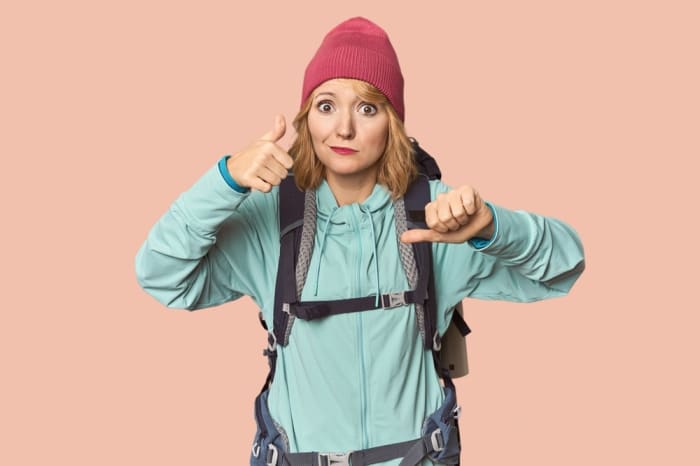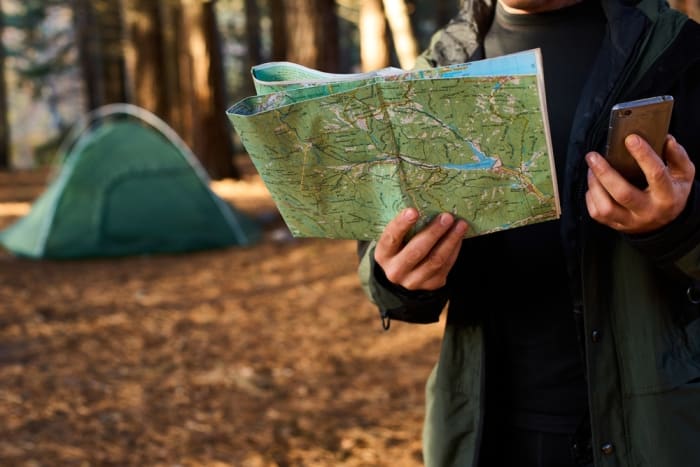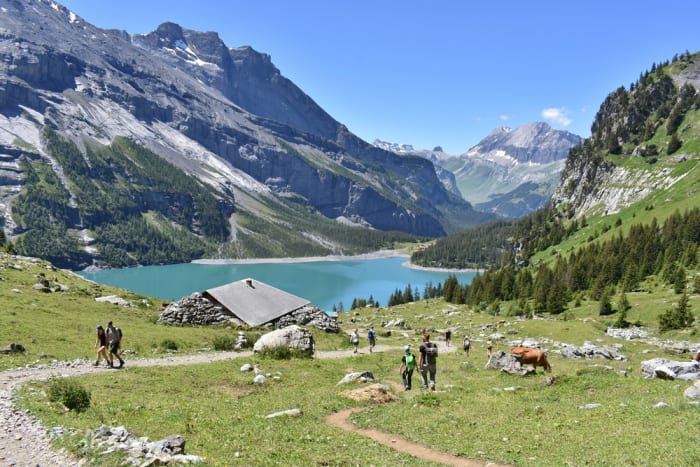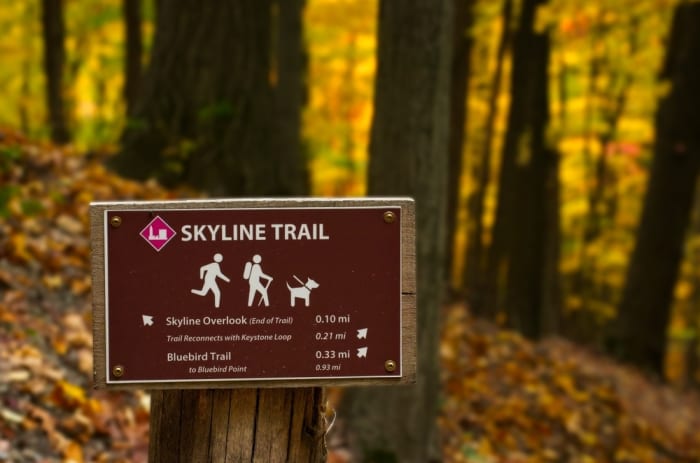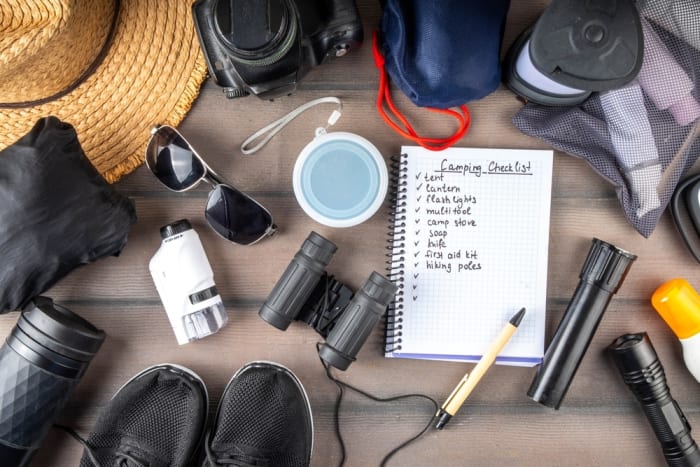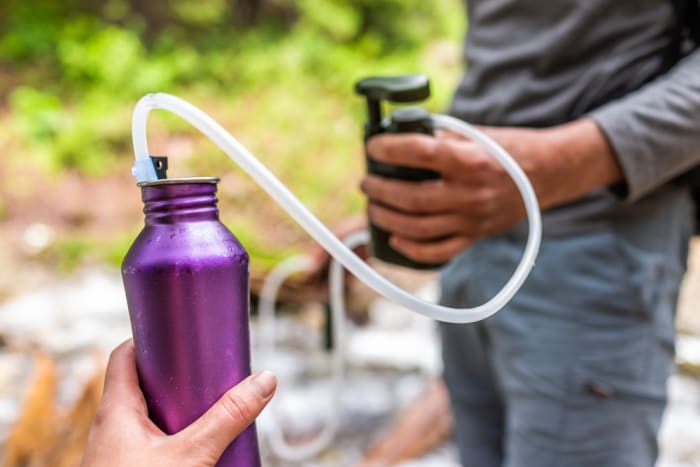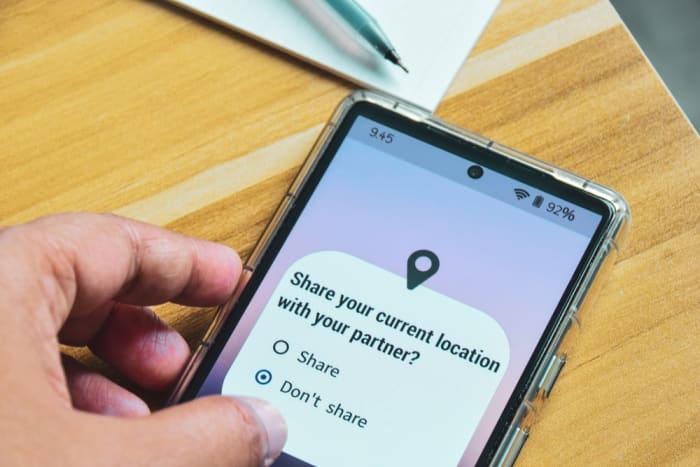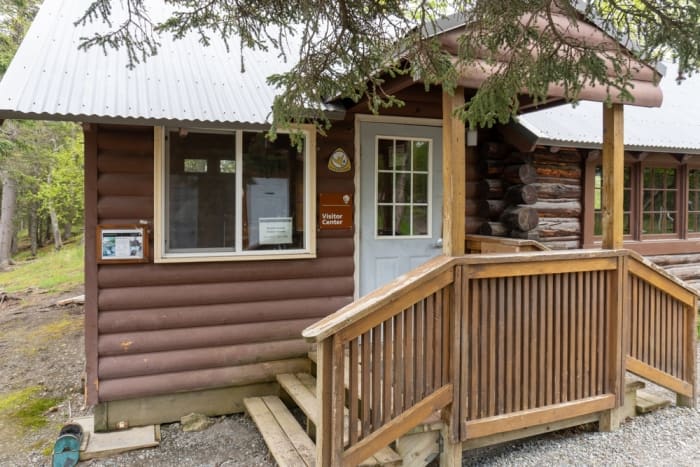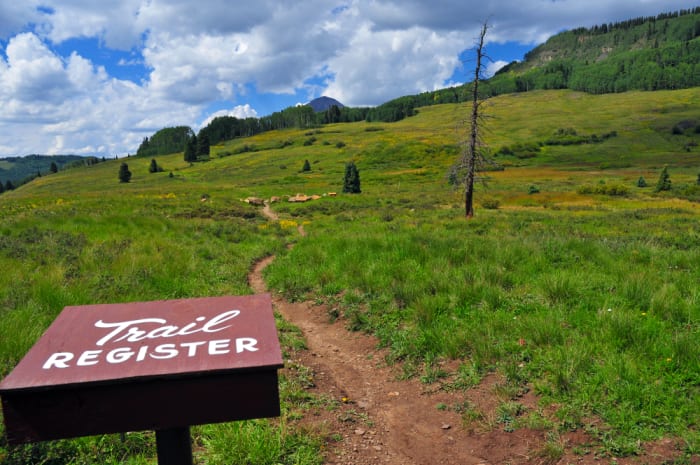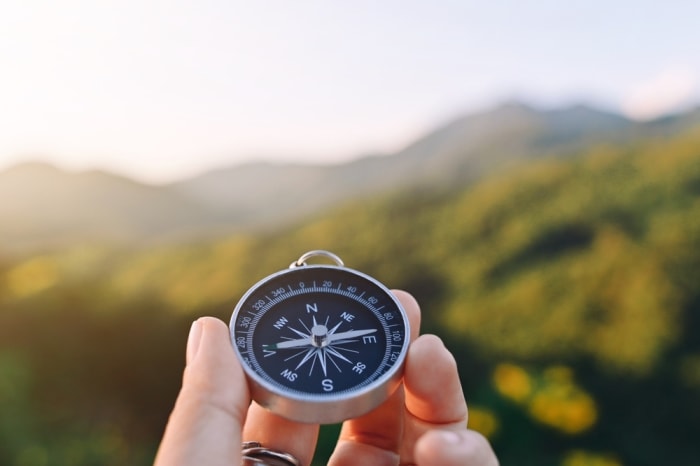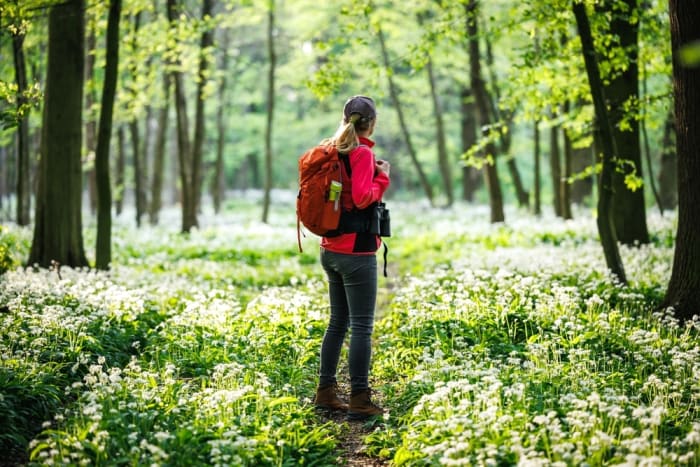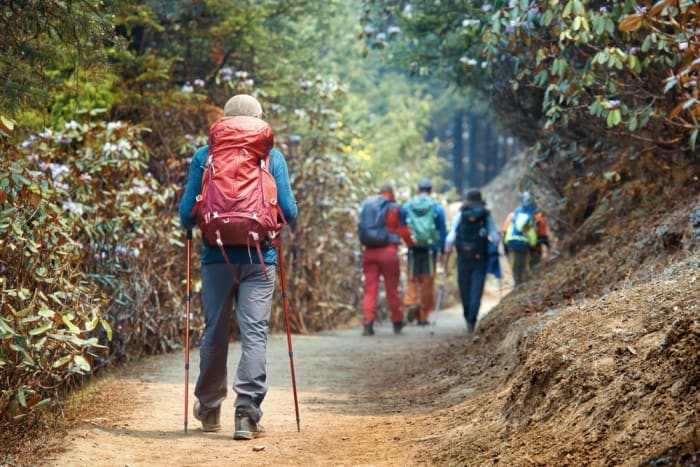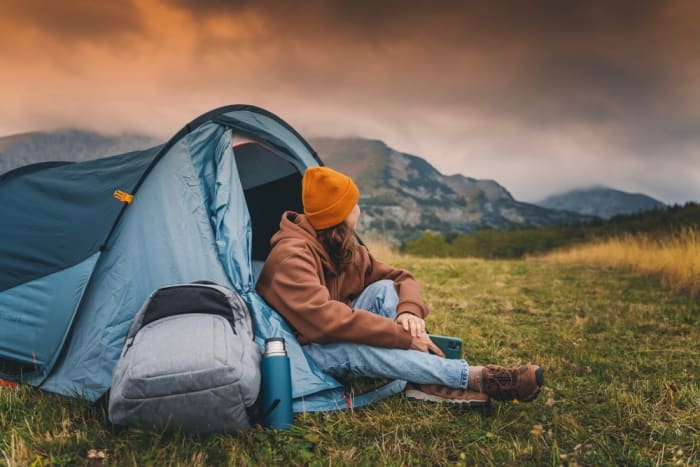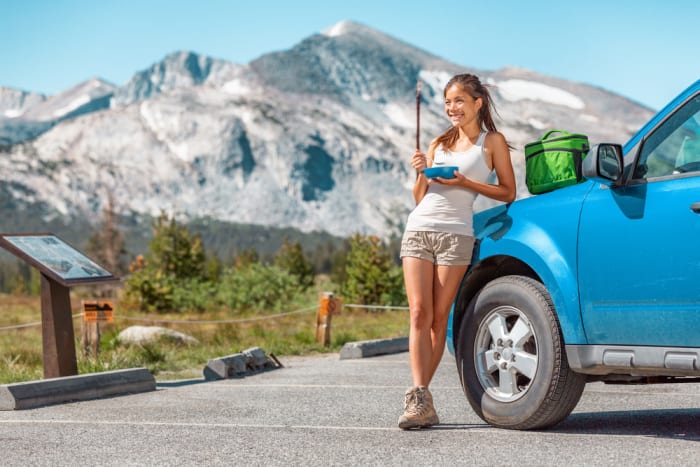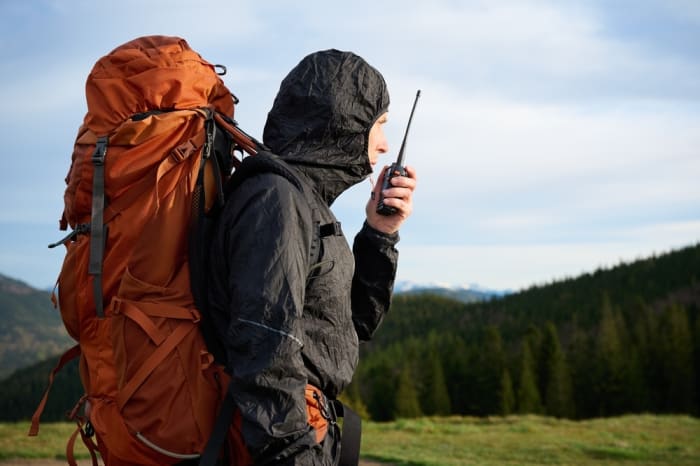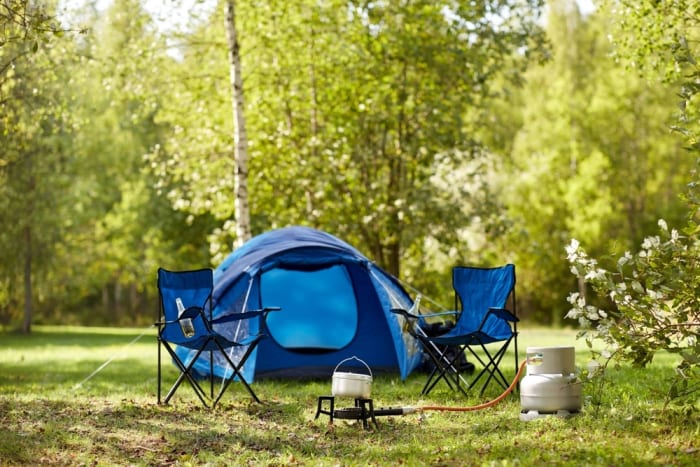Sometimes, you want to go hiking or camping but can’t find someone to go with you. Well, the good news is that adventures alone in the great outdoors can be a lot of fun and totally safe. It just takes more effort and planning to ensure safety and preparedness. Below are 20 recommendations to make your next solo nature excursion a success!
1 of 20
Evaluate your experience and comfort
Shutterstock
Before you go, please take stock of your abilities. If you’re new to exploring mountains, perhaps start with an easy solo day hike. If you’ve been on trails since you were a kid, you can probably solo backpack overnight easily. However, even if you have more experience, you still might not feel comfortable setting off on your own for more than a few hours — and that’s okay! Think about what makes sense and what would be most enjoyable before planning.
2 of 20
Select an appropriate adventure
Shutterstock
Once you’ve considered your abilities, it’s time to pick a trail, campground, lake to paddle, or combination excursion. This is when you read up on the difficulty level and other factors, such as remoteness and facilities, and choose one that matches what you’re reasonably prepared for.
3 of 20
Consider more-frequented areas
Shutterstock
Whether it’s a more popular trail or a lake or campsite that sees more visitors than usual, going somewhere with more people is a good idea on solo trips. At least until you have a few under your belt, usually, I’d recommend avoiding the well-trodden path in favor of a less crowded (and thus, more enjoyable) experience. However, in the case of solo outdoor adventures, it’s good to consider places where there are other people to help if needed.
4 of 20
Keep the numbers in mind
Shutterstock
When you research the various trails and campsites, you might explore alone, note the stats, and consider what is realistic. Can you hike five miles with 2,500 feet of elevation gain? Can you do that overnight with a tent and other gear? Are you comfortable potentially driving two hours without service in a remote forest?
5 of 20
Research the wildlife
Shutterstock
Bears, mountain goats, and cougars, oh my! These and other animals are the reality of spending time in nature. If you’re not sure which (if any) frequent the area you plan to explore, that should be part of pre-trip research. Also, make sure you know what to do if you encounter any, as well as precautions to take, such as storing food away from your tent, packing out all waste, etc.
6 of 20
Make a list and plan
Shutterstock
Do an inventory of what gear (perhaps none) you already have and what needs to be purchased. Think about what you actually need for the outing you’re planning. This takes a bit of trial and error, and those at outdoor stores can be a great resource if you’re unsure.
7 of 20
Bring extra water
Shutterstock
File this under “obvious” tips, but water supply depletion is one of the main reasons vacations in the woods go wrong. Bring more than you think you need and a way to filter any from natural sources.
Shutterstock
Again, this might seem elementary, but consider if your plan A for sustenance doesn’t go according to plan. What if your camping stove goes out? Protein bars, gummies, and fruit are better than nothing!
9 of 20
Share your location and itinerary
Shutterstock
I recommend this for all solo trips, whether to Amsterdam or the Rockies. If something goes wrong, it’s helpful if at least someone in your life knows where you are. Sharing location might not work 100% of the time if you’re somewhere without service, so giving a loved one your full itinerary is helpful.
10 of 20
Check-in at the Ranger’s Station
Shutterstock
Most national, state, provincial, and county parks and forests have a park ranger whose responsibility is to ensure the safety of visitors. So, pop into the ranger station when you first arrive, get any info that might not show up online (like recent bear sightings or road closures that just happened), and register as a visitor so they can find you if a natural disaster occurs.
11 of 20
Register at the trailhead
Shutterstock
Many trailheads have a visitors' book at the start where you can put your name. Again, should something happen, this will help search and rescue, knowing how many people to look out for and where to find you if a loved one contacts them with news that you haven’t returned by your intended date.
12 of 20
Know how to use and read navigation tools
Shutterstock
Maps, compasses, and Garmins are useless if you don’t know how to use them. If you’re unfamiliar with them, attend a wilderness 101 course at an outdoor store or community event in your area.
13 of 20
Wear bright clothing
Shutterstock
There’s a reason so much fluorescent orange and green is found in outdoor stores. It’s easy to pick out from more natural surroundings! If search and rescue need to find you, you’ll want it as easy as possible, so consider a neon hiking jacket and backpack.
14 of 20
Be aware of your surroundings
Shutterstock
This tip applies to travel in general, but especially if you’re planning on going solo in nature. Always keep an extra ear on the trail for wildlife and other visitors, as well as natural occurrences such as avalanches, tree falls, or storms.
15 of 20
Trust your people instincts
Shutterstock
Chances are, you won’t be completely alone on your adventure. It’s always exciting when you encounter another human on what is often a quiet outing. However, what they say is true: Your gut is almost always right. So if you’re getting a weird feeling from your new trail buddy, don’t discount it, maybe consider making an excuse and heading back to your car.
16 of 20
Use common sense
Shutterstock
All of the tips thus far are under this umbrella. But just like the tip about trusting your instinct if another backpacker gives you an odd feeling if a situation or area makes your hair stand up, leave, or pivot plans.
Shutterstock
This is good general advice, but if you’re setting off into the woods alone, take care where you leave your vehicle. Leave it in a noticeable spot in case you need to be located during an emergency. This is usually near the trailhead or campsite.
18 of 20
Have a communication plan
Shutterstock
The great outdoors isn’t always conducive to easy phone calls. So, if you know you’ll be out of service (or even if you’re not sure), let loved ones know when they expect to hear from you. Also, consider investing in backcountry walkie-talkies that can communicate with civilization should that be necessary.
19 of 20
Always have a plan B
Shutterstock
Nature is famously unreliable. So make sure there’s another campsite or accommodation reasonably close to you if an issue comes up with yours. Alternatively, be prepared to make camp wherever necessary should that be required.
20 of 20
Do a practice run
Shutterstock
Especially for newbies! There’s no harm in a backyard or nearby park practice run to test new (or old) gear and knowledge!
Sydney is a travel and lifestyle writer originally from Seattle. She’s also lived in Australia, Quebec, Luxembourg, and France and has visited 26 countries and counting. You can find her work in numerous publications such as Fodor's Travel, Good Housekeeping, Matador Network, Travel + Leisure, and more. In addition to being fluent in English and French, she has attempted (and failed) to learn German and would like to improve her limited Spanish next. You can find her on Twitter/X @sydbakestravels, on Instagram @sydbakescreates, or at sydbakestravels.com.
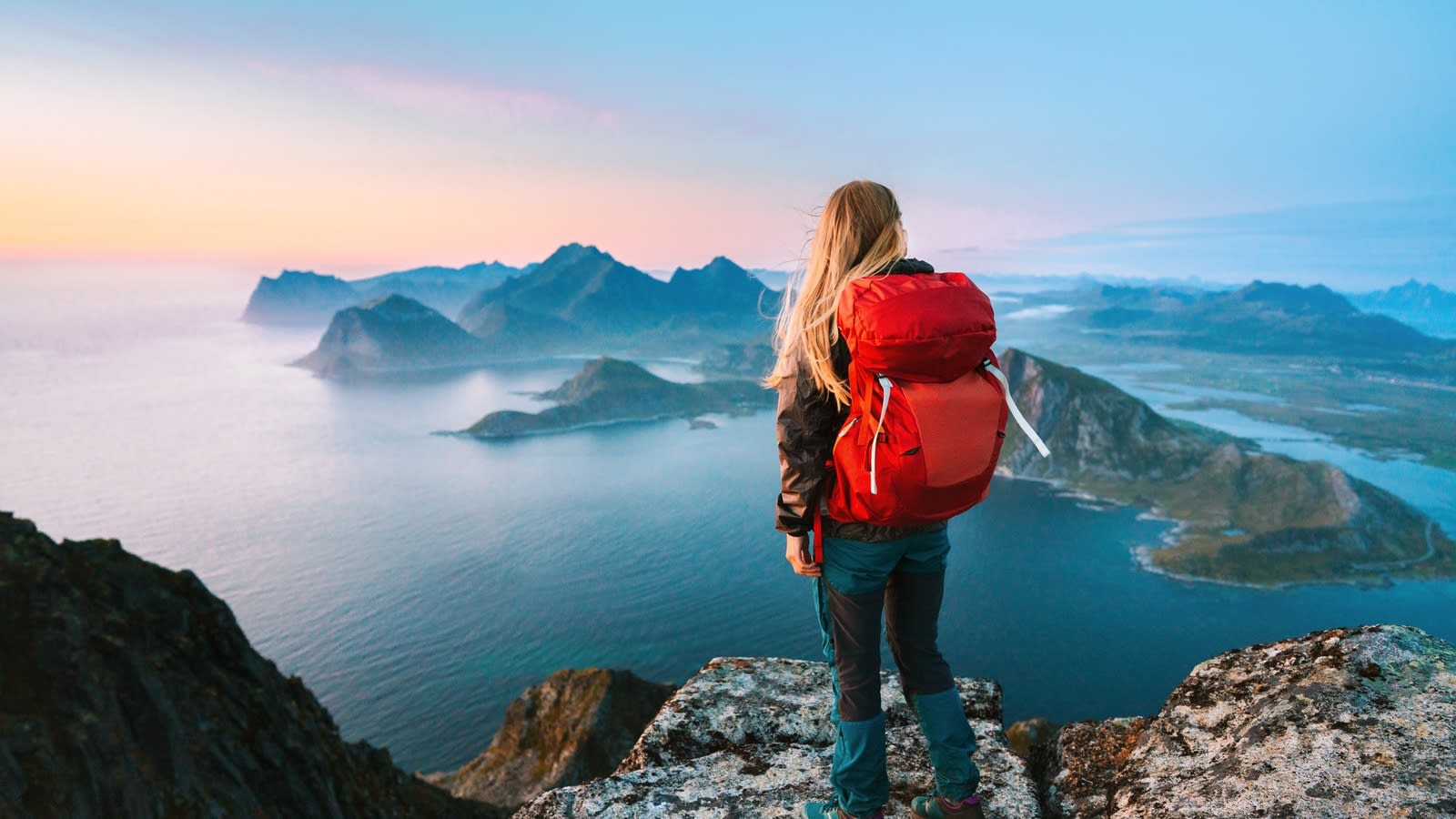
 +
+
